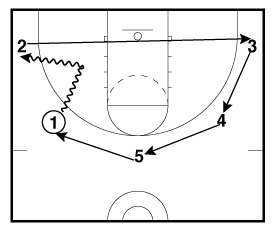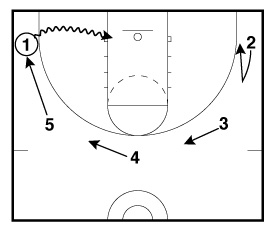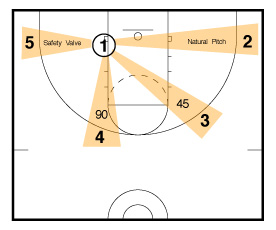The Tribe is all about collaboration - that's why we have this site, to share ideas. As active coaches, you are constantly in the lab with the Read & React and because of that, you have the unique ability to come up with great options, drills, and thoughts.
Today, we start a three part Bounce Drill Series from Rich Czeslawski that he used to solidify Circle Movement habits - something a lot of Tribers struggle with (you can see another of his posts
here). And, if you're uncertain as to what the Bounce Off is, it is explained in more detail
here and
here.
Bounce Drill Series: 3 Man Drills
Since our basketball epiphany and subsequent installation of
Read and React two years ago, we have been able to very quickly and easily create the habits necessary to run the Read and React as a free flowing offense. The elusive “Great White Buffalo” for us has been Layer 4 – Circle Movement. For whatever reason, our players’ natural response to a teammate driving to the basket is to turn to stone, anchor their feet and hope the ball will be kicked out to them so they can take what is likely to be a contested jumper.
They fully understand the benefit Circle Movement provides in increasing the amount of time they have to shoot as their defender must find them and recover to a new spot after helping, but the habit hasn’t quite taken root as quickly as others. After watching the movie
Inception, and toying with the idea of using dream extraction to plant the habit in their subconscious minds, we decided we just didn’t have it in the budget to go that route and went searching for other answers.
Our far less expensive solution was born out of a topic introduced by Rick Torbett at a
Read and React clinic we hosted in May. Rick showed our players the merits of “bouncing off” when you drive and can’t get all the way to the rim. The idea is to keep your dribble and “bounce off” to the perimeter spot left open by the teammate circle moving on your initial drive.
This concept has evolved into a series of drills we work on every day and has improved our Circle Movement more in two weeks than anything else we have tried in the previous two years!
We start with two 3 Player Drills and although they are both shown on the right side of the court, we always drill on both sides in practice.






